Top 10 Most Beautiful Historical Sites in Indonesia
Visiting tourist locations with significant historical significance may always provide a unique holiday experience. It would be fantastic to be able to see ... read more...some of the sites you learned about in history textbooks. History has its own allure that might enthrall certain people. Surprisingly, there are many ancient sites in Indonesia that are just as appealing as current tourist locations. Here is a list of the most beautiful historical sites in Indonesia.
-
Prambanan is a 9th-century Hindu temple compound in Yogyakarta's Special Region devoted to the Trimurti, God's manifestation as the Creator, Preserver, and Destroyer. The temple compound is about 17 kilometers northeast of Yogyakarta, on the border between the provinces of Central Java and Yogyakarta.
The Prambanan temple's construction is based on Vastu Shastra, which is a Hindu architectural tradition. The temple design included mandala temple plan arrangements as well as the traditional Hindu temple high towering spires. Shivagrha was the original name of Prambanan, and it was devoted to the deity Shiva. The temple was built to resemble Meru, the Hindu gods' dwelling and Shiva's residence. According to Hindu cosmology and the levels of Loka, the entire temple complex represents a representation of the Hindu world.
The temple compound, which is a UNESCO World Heritage Site, is Indonesia's biggest Hindu temple site and Southeast Asia's second-largest after Angkor Wat. It is distinguished by its Hindu-style tall and pointed construction, as well as the 47-meter-high center structure among a massive complex of separate temples. The Prambanan temple complex once consisted of 240 temple complexes, and it embodies the grandeur of ancient Java's Hindu art and architecture, as well as being considered a masterpiece of Indonesia's classical period. Prambanan is a popular tourist destination for people from all over the world.
Location: Kabupaten Sleman, Daerah Istimewa Yogyakarta, Indonesia
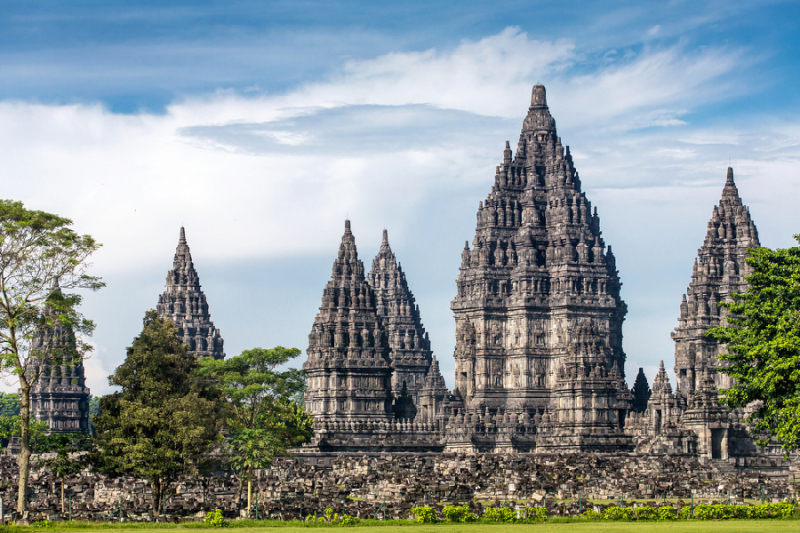
Source: blog.tiket.com -
Borobudur is a 9th-century Mahayana Buddhist temple in Magelang Regency, Central Java, Indonesia, not far from the town of Muntilan. It is one of the most beautiful historical sites in Indonesia and is the biggest Buddhist temple in the world. The temple is made up of nine stacked platforms, six square and three round, with a central dome atop them. It has 2,672 relief panels and was formerly home to 504 Buddha sculptures. 72 Buddha sculptures, each seated inside a perforated stupa, encircle the center dome.
The temple was built during the rule of the Sailendra Dynasty in the 9th century, and its design is based on Javanese Buddhist architecture, which combines the Indonesian indigenous custom of ancestor worship with Buddhist philosophy. The temple displays India's influence on the region through Gupta art, yet there are enough local images and components included to make Borobudur truly Indonesian.
The Indonesian government and UNESCO collaborated on the greatest repair effort between 1975 and 1982, which was followed by the monument's designation as a UNESCO World Heritage Site. Borobudur is the world's biggest Buddhist temple, and it is one of Southeast Asia's great archeological monuments, alongside Bagan in Myanmar and Angkor Wat in Cambodia. Borobudur is still a famous pilgrimage site, with Buddhists in Indonesia commemorating Vesak Day there. Borobudur is Indonesia's most popular tourist destination.
Location: Kabupaten Magelang, Jawa Tengah, Indonesia
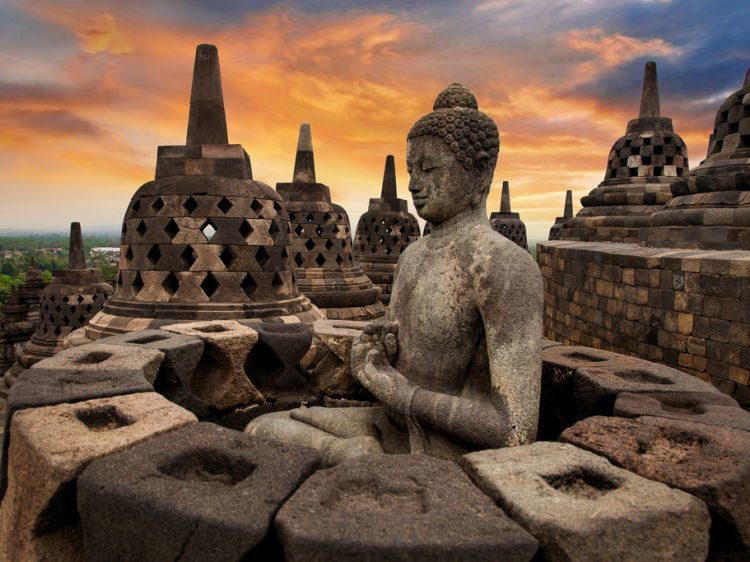
Source: indonesia-tourism.com -
Fort Rotterdam is a 17th-century fort near Makassar, Indonesia, on the Indonesian island of Sulawesi. It is a Dutch fort that was erected on top of an old Gowa Kingdom fort. It was encompassed by a seven-meter-high rampart and a two-meter-deep moat and had six bastions. Until the 1930s, the fort served as the Dutch provincial military and administration headquarters. It was completely renovated in the 1970s and is currently used as a cultural and educational center, as well as a venue for music and dance performances, and as a tourist attraction.
In the heart of Makassar is Fort Rotterdam. It has a rectangular form and is encircled by a seven-meter wall. Bastion Bonnie (named after the Bone state) to the west; Bastion Boston (named after Buton Island) to the northwest; Bastion Batjang (named after the Bacan Islands) to the southwest; Bastion Mandassar (named after Ambon) to the northeast; and Bastion Amboina (named after Ambon) to the southeast. Bastion Ravelin, the sixth bastion, is no longer visible. Cannons may still be found in several of the bastions. The majority of the ramparts are walkable. The fort used to be surrounded by a two-meter-deep moat system, but only the southwest section of the moat can still be visible.
Location: Kota Makassar, Sulawesi Selatan, Indonesia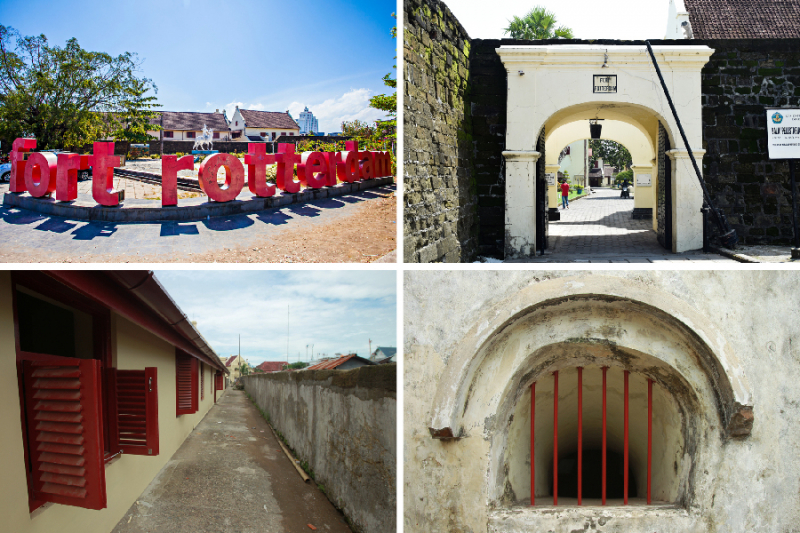
Source: blog.tiket.com -
Baiturrahman Grand Mosque is a mosque in Banda Aceh, Aceh Province, Indonesia, located in the heart of the city. The Baiturrahman Grand Mosque is a symbol of the Acehnese people's religion, culture, spirit, power, struggle, and nationalism. The mosque is a Banda Aceh monument that survived the Indian Ocean tsunami of 2004. It is one of the most beautiful historical sites in Indonesia.
The mosque was initially planned by Gerrit Bruins, a Dutch architect. L.P. Luijks altered the design after that, and he also oversaw the building work done by constructor Lie A Sie. The selected design is Mughal revival, which has majestic domes and minarets. The unusual black domes are made of hardwood shingles that have been tiled together.
The interior has relief-carved walls and pillars, a Chinese marble staircase and floor, stained-glass windows from Belgium, beautiful bronze chandeliers, and well-decorated oak doors. The stones used in the construction come from the Netherlands. When it was finished, this new style stood in sharp contrast to the previous mosque, which many Acehnese refused to pray in since it was built by "infidels" from the Netherlands. The mosque, on the other hand, is now the pride of Banda Aceh. The mosque now features seven domes, eight minarets, and 32 pillars.
Location: Kota Banda Aceh, Aceh, Indonesia
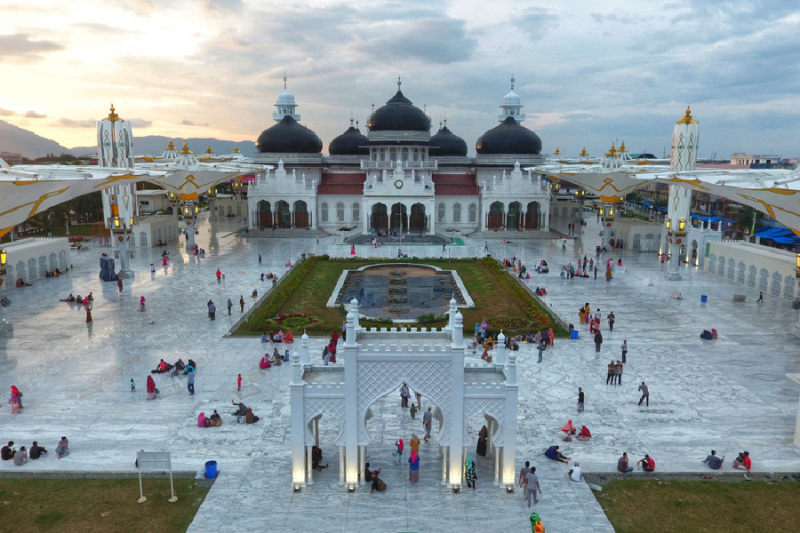
Source: blog.tiket.com -
The Village of the Dead in Tana Toraja is famed for its one-of-a-kind, exquisite wooden Tongkonan homes, as well as the rice barns; the hanging tombs at Lemo; the megalithic stones at Bori that have been there for thousands of years; and so much more. All of these fascinating areas of interest have a trained guide to assist you to understand their rich and distinct culture.
For Tana Toraja locals, the walking dead are more than a phantasmal phenomenon—they're a reality! These bodies do not come back to life, unlike those from popular TV programs, and despite online rumors to the contrary. Tana Toraja, often known as the "Land of the Heavenly Kings," is located on the mountainous island of South Sulawesi, deep in the heart of eastern Indonesia's lush forests. Torajans are famous for their beautiful tropical surroundings, delicious arabica coffee, and chocolate beans, and unique funeral rituals. Toraja's inhabitants follow cultural norms that revolve their life around death. Funerals, in keeping with their forefathers' customs, outstrip weddings, and birthdays, and, in some ways, are year-round celebrations in terms of cost and splendor.
Location: Tana Toraja, Indonesia
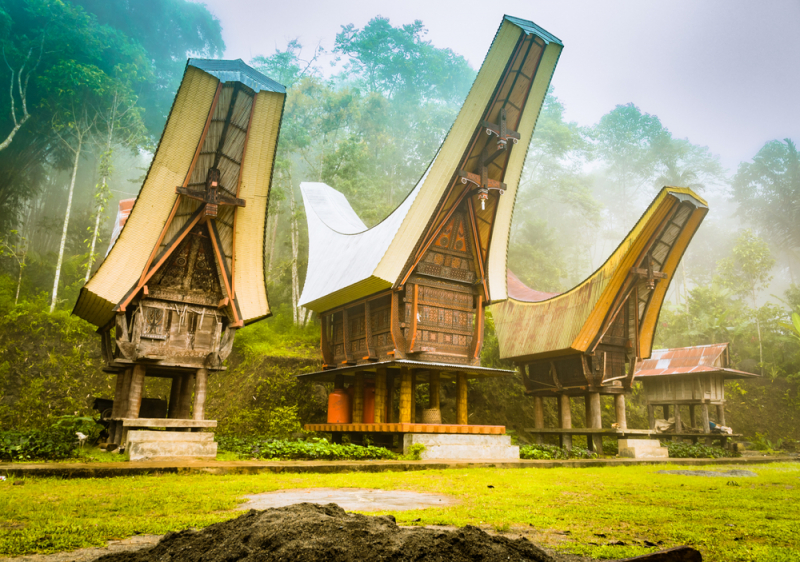
Source: ripleys 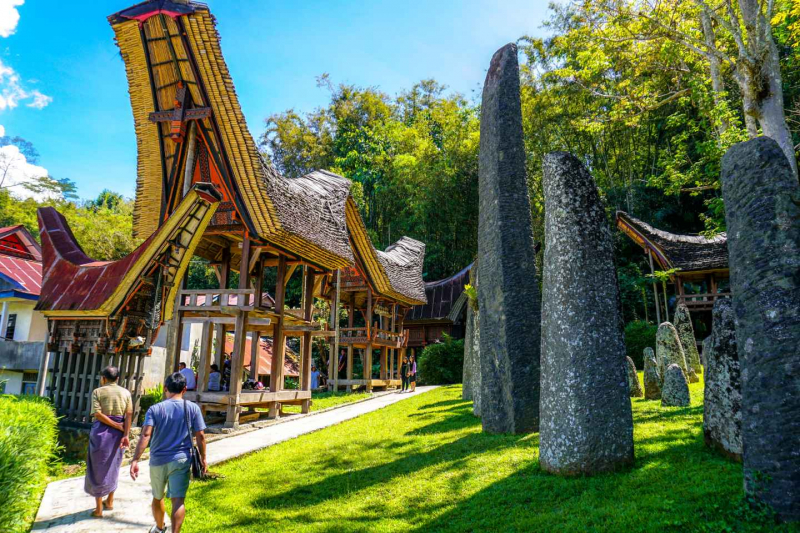
Source: trip101.com -
The Samosir island is located in Toba's massive crater lake. It is the cultural center of the Toba Batak people. A trip to Lake Toba isn't complete without a stay on Samosir, which is home to several historic villages along the lake's shores. The ground climbs abruptly on the east side of the island from a tiny strip of flat land along the lake's water border to a central plateau that soars 780 meters above the waves. From this vantage point, one may enjoy a breathtaking panoramic view of this lovely blue lake.
As soon as you walk off the ferry in Tomok, you'll be met with a series of souvenir kiosks offering anything from traditional hand-woven linens to Batak bamboo calendars and other trinkets. Tuktuk Siadong, or just Tuktuk, is a tiny peninsula to the north of Tomok that is famed for its sandy beaches and verdant surroundings. The verdant fields mix seamlessly with the gently lapping blue waves of Lake Toba. Despite the fact that it has beaches and watersports, the air is cold since it is located high in the mountains. As a result, Tuktuk has become a popular tourist destination, with a multitude of small hotels and homestays, restaurants, and handicrafts aplenty.
Location: the north of the island of Sumatra in Indonesia
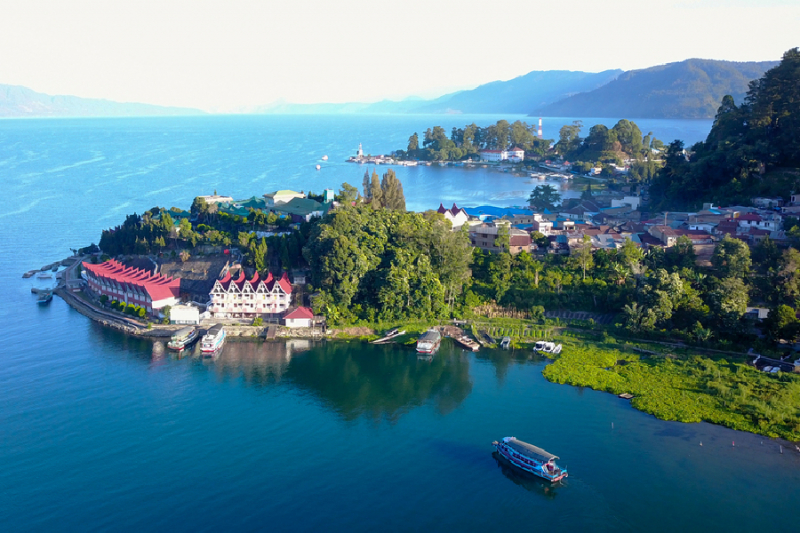
Source: blog.tiket.com -
Gedung Sate, a public building, was built in 1920 by Dutch architect J. Gerber as the seat of the Dutch East Indies department of State-Owned Enterprises, and it was constructed in a neoclassical style with traditional Indonesian characteristics (such as Hindu-Buddhist themes). The structure now functions as both the governor's residence and a museum for the province of West Java.
Gedung Sate is a moniker that directly translates to 'satay building' in Indonesian. This is a reference to the shape of the structure's center pinnacle, which resembles the shape of a typical Indonesian dish called satay. The six spheres in the center pinnacle signify the six million guldens invested in the building's construction. Because it is the hub of West Java administration as well as the most intriguing icon to see, this Indo-European architectural style edifice always appears to be packed on weekdays and holidays. The edifice facing Mount Tangkuban Perahu rises magnificently equipped with the Gedung Sate Tower, surrounded by well-prepared gardens.
Location: Kota Bandung, Jawa Barat, Indonesia
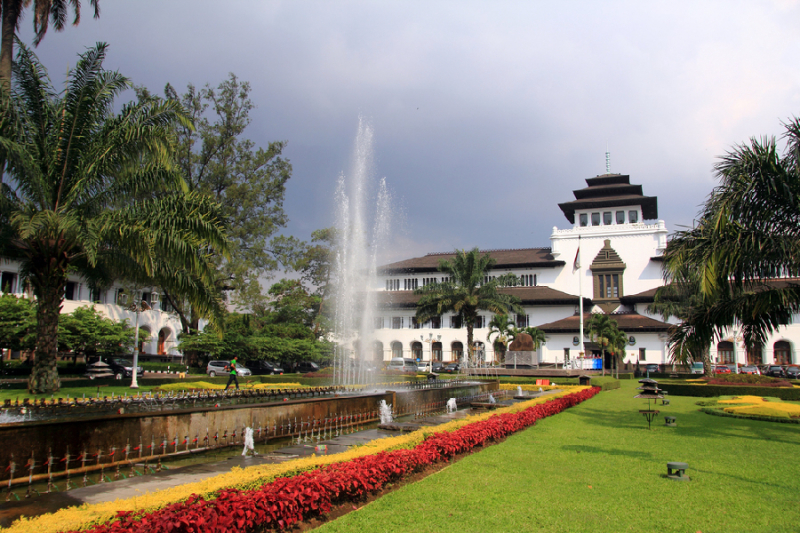
Source: blog.tiket.com -
Maimoon Palace or Maimun Palace (Indonesian: Istana Maimun) is a well-known monument in Medan, the capital city of Northern Sumatra, Indonesia. It is an istana (royal palace) of the Sultanate of Deli. It now functions as a museum. The name is derived from the Arabic word "blessed." It is one of the most beautiful historical sites in Indonesia.
Built between 1887 and 1891 by Sultan Ma'mun Al Rashid Perkasa Alamyah, the palace was built by Dutch architect Theodoor van Erp and spans 2,772 m2 with 30 rooms. The Maimun Palace has become a renowned tourist site in the city, not only due to its historical significance but also due to its distinctive interior design, which incorporates aspects of Malay cultural history, Islamic and Indian architecture, as well as Spanish and Italian furniture and fittings. It is the last remaining Melayu palace after the others were demolished during the social revolution of 1946. It was guarded by British soldiers stationed nearby.
Location: Kota Medan, Sumatera Utara, Indonesia
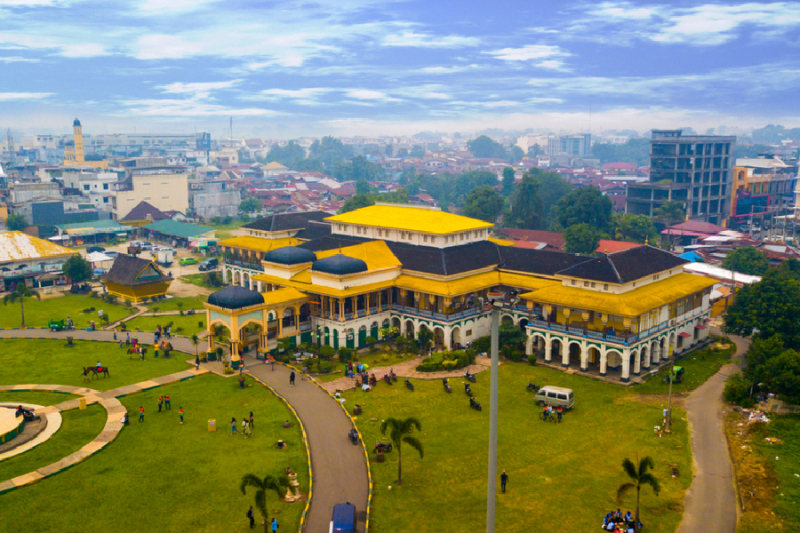
Source: blog.tiket.com -
The clock tower, known as Jam Gadang, is a notable landmark and tourist attraction in Bukittinggi, West Sumatra, Indonesia. It is located in the heart of the city, near Pasar Ateh, the city's largest market. On each face, there are big clocks. Bernard Vortmann of Recklinghausen, Germany, created four clocks for the tower, which were sent through Rotterdam. Each clock face is 80 cm in diameter (31 in). The number 4 is represented as "IIII" rather than the customary Roman numeral "IV" on the clocks. The tower's cornerstone was laid by Rook Maker's 6-year-old son, who was the city secretary of Bukittinggi at the time.
The Jam Gadang tower is a Bukittinggi landmark and the city's principal tourist attraction. The building is frequently the subject of local souvenirs due to its unique look. It is printed on clothing, painted, sculpted, and used as a model for magnet design, among other things. Tourists visiting Bukittinggi frequently snap photos in front of the tower, and locals provide photographic services for this reason. Tourists used to be able to climb to the top of the tower, but as of 2016, they must get formal authorization. The Jam Gadang attracts a large number of visitors who come with their families or friends. Many hotels, as well as traditional horse-drawn carriages known as bendi, are located near Jam Gadang.
Location: Bukittinggi, Indonesia
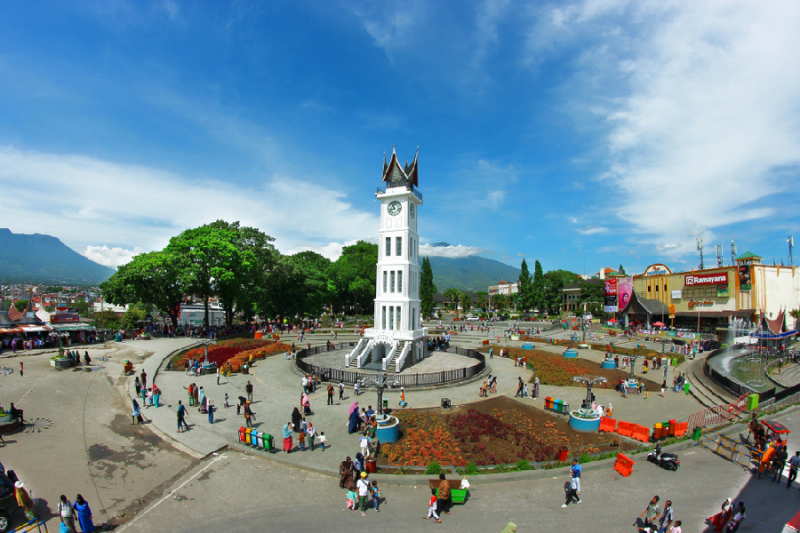
Source: blog.tiket.com 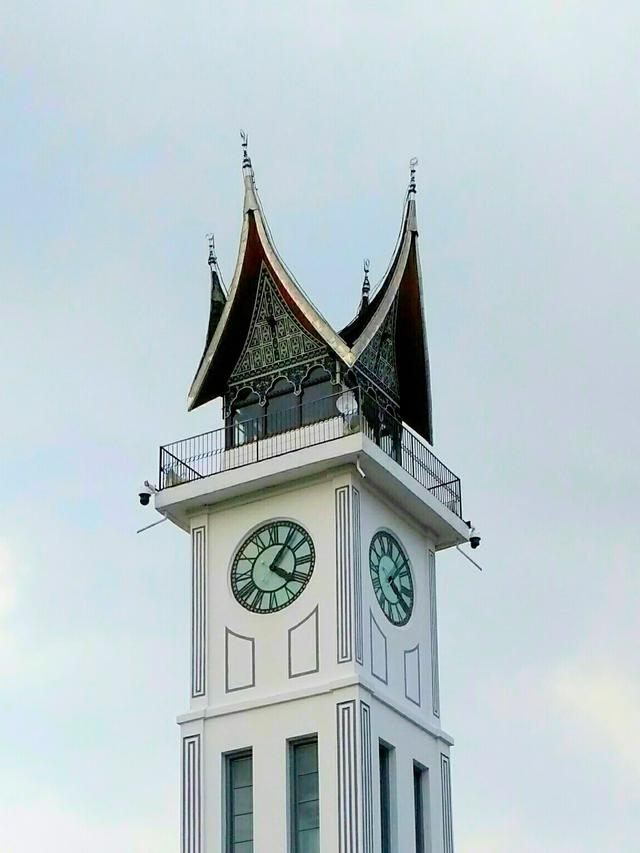
Source: liputan6 -
In Semarang, Central Java, Indonesia, Lawang Sewu is a former office building. The national railway corporation Kereta Api Indonesia (KAI) owns the former head office of the Dutch East Indies Railway Co. . Djawatan Kereta Api, its predecessor, took all rail transport infrastructure and offices from Dutch rule. Today, the structure serves as a museum and historical railway gallery, which is run by KAI's Heritage Unit and its subsidiary KAI Wisata.
On Pemuda Street, the complex consists of six buildings: two large ones, A and B, and two smaller ones, C and D. The Tugu Muda roundabout is seen from the L-shaped A building. A structure has two similar towers, each with a capacity of 7,000 liters, that were initially used to store water (1,800 US gal). There are massive stained-glass windows throughout the structure, as well as a grand stairway in the middle. A tunnel previously connected A building to a number of other locations in the city, including the governor's residence and the harbor.
Behind the A building is the B building. The building is three stories tall, with offices on the first two levels and a ballroom on the third. The structure, which has lofty, big windows, also include a partially flooded basement level that helps to cool the building through evaporation. A monument to five employees slain during the Indonesian National Revolution stands in front of a building.
Location: Kota Semarang, Jawa Tengah, Indonesia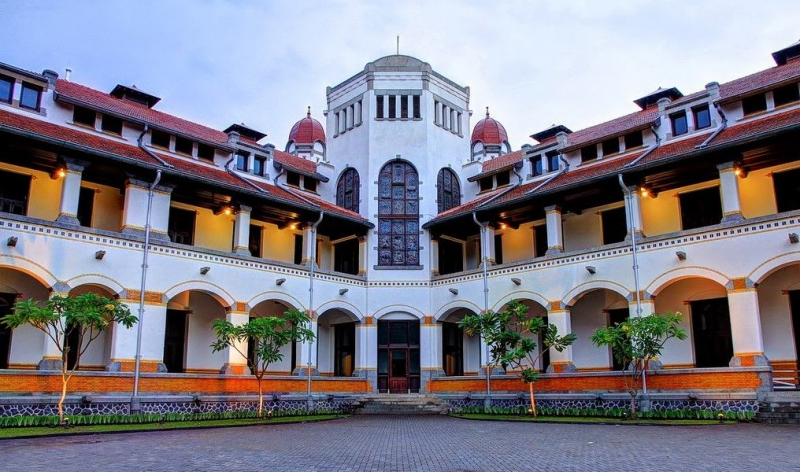
Source: semarangarea 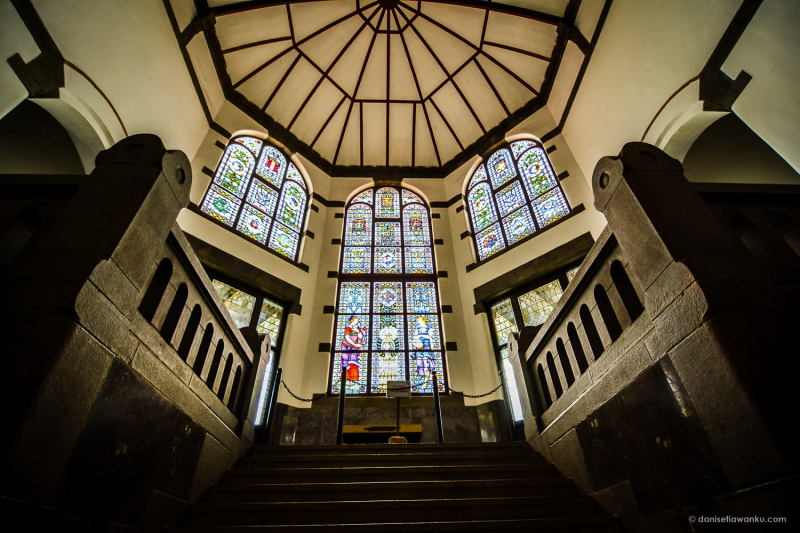
Source: danisetiawanku































